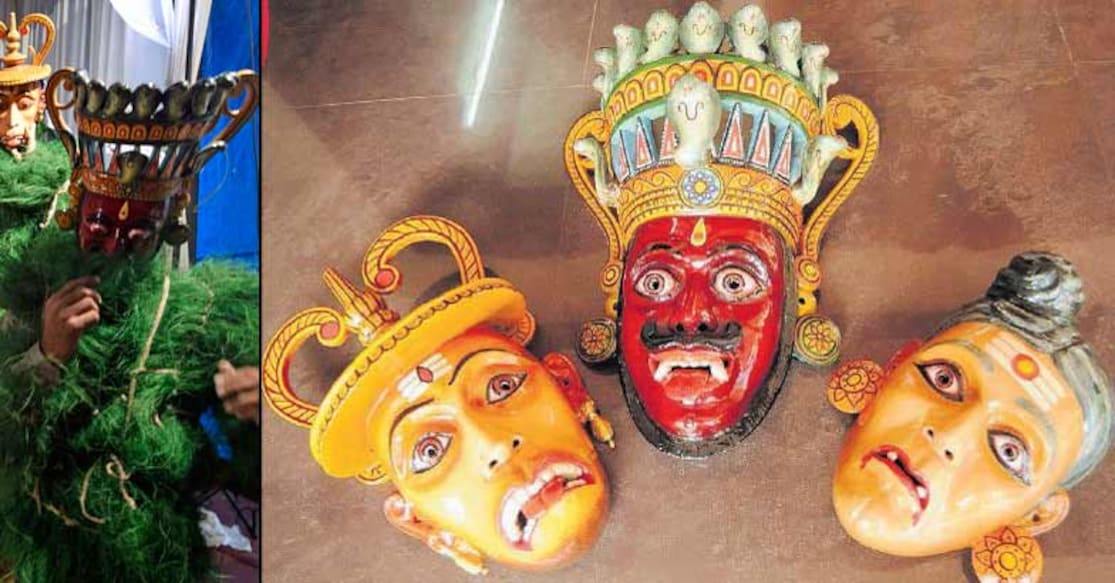Believe it or not: These Kummatti masks are 75 years old

Mail This Article
When the Kummatti Festival takes place on the Avittam day this year, it would mark 75 years since the Kummatti masks came into existence in Thekkummuri, Kizhakkumpattukara in Thrissur.
What started off as a confluence of art and myth has slowly grown in prominence as a defining symbol of the local culture. And needless to say, that the people are getting ready to celebrate the milestone in a grand manner this time.
The history of these masks
Seventy five years ago, Karuppurath Raman Nair, Madhavan Nair and Govindankutty Nair had come up with the design of these face-masks. Vishwanathan Ashari had carved the masks out of jack wood. It is believed that the wood used for making the masks were submerged in oil for six months before they were worked upon.

Long ago, Kummatti masks were made from arecanut fronds. These were replaced by the metal ones before the masks made from wood became popular. Even though other faces were made since 2001, nothing has excelled in features than those made 75 years ago.
What is Kummatti?
Kummatti is a local art form. The artists are mostly locals who dress up in a particular variety of grass and adorn masks. The festival is a procession that goes around the town. There are about 40 local Kummattis in the district. Of which the Kizhakkumpattukara Kummatti has years of tradition behind it. During the festival, the Kummattis come from Vadakkummuri, Thekkummuri and Prithvi.
The event
The procession starts from Thykkattu Mana and after traversing Kizhakkumpattukara reaches back at the starting point. These days other artforms accompany the Kummatti performers.

While costs would touch about Rs 4 lakhs, the government provides only Rs 10,000. Costs are met by donations given by people in the region. But, the burning issue these artists face is the lack of availability of a special grass that is needed to adorn the Kummattis.
During Onam, people dressed as Kummattis come to visit homes asking after the well being of people. It is believed that Ganapathy was assuaged of his anger by demi-gods who came to in him various forms. Satisfied, he joined them. The tradition of Kummatti is based on that story.
When? This year, Kummatti will be held on September 15

